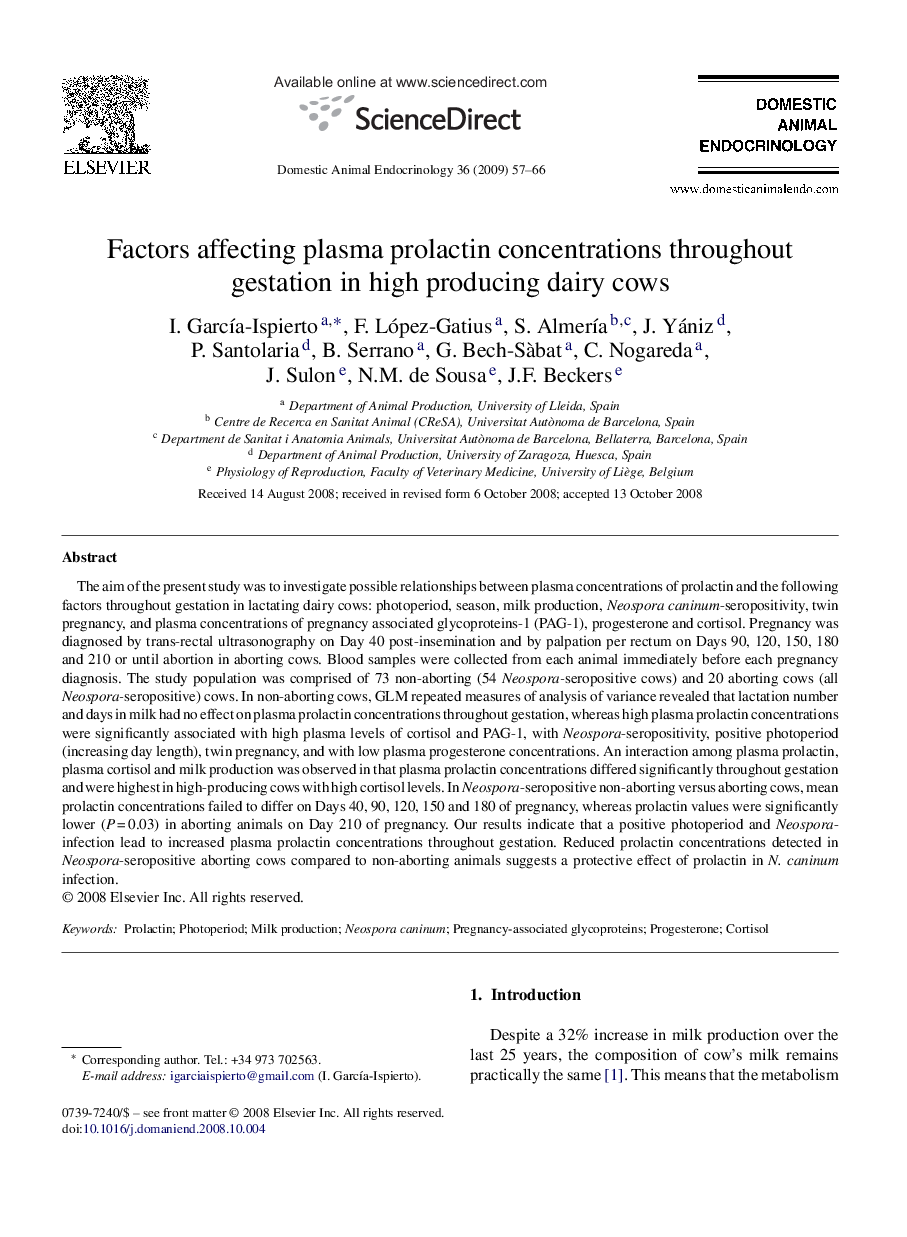| Article ID | Journal | Published Year | Pages | File Type |
|---|---|---|---|---|
| 2394058 | Domestic Animal Endocrinology | 2009 | 10 Pages |
The aim of the present study was to investigate possible relationships between plasma concentrations of prolactin and the following factors throughout gestation in lactating dairy cows: photoperiod, season, milk production, Neospora caninum-seropositivity, twin pregnancy, and plasma concentrations of pregnancy associated glycoproteins-1 (PAG-1), progesterone and cortisol. Pregnancy was diagnosed by trans-rectal ultrasonography on Day 40 post-insemination and by palpation per rectum on Days 90, 120, 150, 180 and 210 or until abortion in aborting cows. Blood samples were collected from each animal immediately before each pregnancy diagnosis. The study population was comprised of 73 non-aborting (54 Neospora-seropositive cows) and 20 aborting cows (all Neospora-seropositive) cows. In non-aborting cows, GLM repeated measures of analysis of variance revealed that lactation number and days in milk had no effect on plasma prolactin concentrations throughout gestation, whereas high plasma prolactin concentrations were significantly associated with high plasma levels of cortisol and PAG-1, with Neospora-seropositivity, positive photoperiod (increasing day length), twin pregnancy, and with low plasma progesterone concentrations. An interaction among plasma prolactin, plasma cortisol and milk production was observed in that plasma prolactin concentrations differed significantly throughout gestation and were highest in high-producing cows with high cortisol levels. In Neospora-seropositive non-aborting versus aborting cows, mean prolactin concentrations failed to differ on Days 40, 90, 120, 150 and 180 of pregnancy, whereas prolactin values were significantly lower (P = 0.03) in aborting animals on Day 210 of pregnancy. Our results indicate that a positive photoperiod and Neospora-infection lead to increased plasma prolactin concentrations throughout gestation. Reduced prolactin concentrations detected in Neospora-seropositive aborting cows compared to non-aborting animals suggests a protective effect of prolactin in N. caninum infection.
